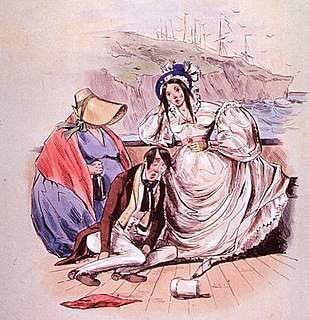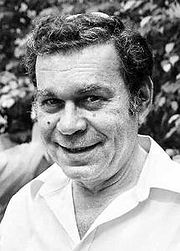
Thought encompasses a flow of ideas and associations that can lead to logical conclusions. Although thinking is an activity of an existential value for humans, there is still no consensus as to how it is adequately defined or understood.
Causality is influence by which one event, process, state or object contributes to the production of another event, process, state or object where the cause is partly responsible for the effect, and the effect is partly dependent on the cause. In general, a process has many causes, which are also said to be causal factors for it, and all lie in its past. An effect can in turn be a cause of, or causal factor for, many other effects, which all lie in its future. Some writers have held that causality is metaphysically prior to notions of time and space.

Motion sickness occurs due to a difference between actual and expected motion. Symptoms commonly include nausea, vomiting, cold sweat, headache, sleepiness, yawning, loss of appetite, and increased salivation. Complications may rarely include dehydration, electrolyte problems, or a lower esophageal tear.

Eliyahu Moshe Goldratt was an Israeli business management guru. He was the originator of the Optimized Production Technique, the Theory of Constraints (TOC), the Thinking Processes, Drum-Buffer-Rope, Critical Chain Project Management (CCPM) and other TOC derived tools.
The theory of constraints (TOC) is a management paradigm that views any manageable system as being limited in achieving more of its goals by a very small number of constraints. There is always at least one constraint, and TOC uses a focusing process to identify the constraint and restructure the rest of the organization around it. TOC adopts the common idiom "a chain is no stronger than its weakest link". This means that processes, organizations, etc., are vulnerable because the weakest person or part can always damage or break them or at least adversely affect the outcome.
The thinking processes in Eliyahu M. Goldratt's theory of constraints are the five methods to enable the focused improvement of any cognitive system.
In science and engineering, root cause analysis (RCA) is a method of problem solving used for identifying the root causes of faults or problems. It is widely used in IT operations, telecommunications, industrial process control, accident analysis, medicine, healthcare industry, etc.
This is a list of topics related to the Theory of constraints.
Troubleshooting is a form of problem solving, often applied to repair failed products or processes on a machine or a system. It is a logical, systematic search for the source of a problem in order to solve it, and make the product or process operational again. Troubleshooting is needed to identify the symptoms. Determining the most likely cause is a process of elimination—eliminating potential causes of a problem. Finally, troubleshooting requires confirmation that the solution restores the product or process to its working state.
The Evaporating Cloud is one of the six Thinking Processes in the Theory of Constraints. The Evaporating Cloud (EC) - also referred to in the literature as "the cloud", or as a "conflict resolution diagram" - is a logical diagram representing a problem that has no obvious satisfactory solution.

It's Not Luck (1994) is a business novel and a sequel to The Goal. Set several years after, the plot continues to follow the advancement of the main character, Alex Rogo, through the corporate ranks of large manufacturer, UniCo.
Five whys is an iterative interrogative technique used to explore the cause-and-effect relationships underlying a particular problem. The primary goal of the technique is to determine the root cause of a defect or problem by repeating the question "Why?". Each answer forms the basis of the next question. The "five" in the name derives from an anecdotal observation on the number of iterations needed to resolve the problem.

Critical Chain is a novel by Dr. Eliyahu Goldratt using the Critical Chain theory of Project Management as the major theme. It is really a teaching method for the theory.

The following outline is provided as an overview of and topical guide to thought (thinking):
Corrective and preventive action consists of improvements to an organization's processes taken to eliminate causes of non-conformities or other undesirable situations. It is usually a set of actions that laws or regulations require an organization to take in manufacturing, documentation, procedures, or systems to rectify and eliminate recurring non-conformance. Non-conformance is identified after systematic evaluation and analysis of the root cause of the non-conformance. Non-conformance may be a market complaint or customer complaint or failure of machinery or a quality management system, or misinterpretation of written instructions to carry out work. The corrective and preventive action is designed by a team that includes quality assurance personnel and personnel involved in the actual observation point of non-conformance. It must be systematically implemented and observed for its ability to eliminate further recurrence of such non-conformation. The Eight disciplines problem solving method, or 8D framework, can be used as an effective method of structuring a CAPA.
Group conflict, or hostilities between different groups, is a feature common to all forms of human social organization, and also occurs in social animals. Although group conflict is one of the most complex phenomena studied by social scientists, the history of the human race evidences a series of group-level conflicts that have gained notoriety over the years. For example, from 1820 to 1945, it has been estimated that at least 59 million persons were killed during conflicts between groups of one type or another. Literature suggests that the number of fatalities nearly doubled between the years 1914 to 1964 as a result of further group conflict.
Negative Branch Reservations is an emerging phenomenon from Eliyahu Goldratt's Theory of Constraints. A Negative Branch Reservation is a cause and effect analysis of a situation. This thinking skill is used to map out what can go wrong in a process of change and help to anticipate any negative outcomes. This technique uses these forms in its analysis Thinking Processes of the theory: Future Reality Tree, Transition Tree, or Prerequisite Tree.
Social undermining is the expression of negative emotions directed towards a particular person or negative evaluations of the person as a way to prevent the person from achieving their goals. This behavior can often be attributed to certain feelings, such as dislike or anger. The negative evaluation of the person may involve criticizing their actions, efforts or characteristics. Social undermining is seen in relationships between family members, friends, personal relationships and co-workers. Social undermining can affect a person's mental health, including an increase in depressive symptoms. This behavior is only considered social undermining if the person's perceived action is intended to hinder their target. When social undermining is seen in the work environment the behavior is used to hinder the co-worker's ability to establish and maintain a positive interpersonal relationship, success and a good reputation. Examples of how an employee can use social undermining in the work environment are behaviors that are used to delay the work of co-workers, to make them look bad or slow them down, competing with co-workers to gain status and recognition and giving co-workers incorrect or even misleading information about a particular job.
Self-blame is a cognitive process in which an individual attributes the occurrence of a stressful event to oneself. The direction of blame often has implications for individuals’ emotions and behaviors during and following stressful situations. Self-blame is a common reaction to stressful events and has certain effects on how individuals adapt. Types of self-blame are hypothesized to contribute to depression, and self-blame is a component of self-directed emotions like guilt and self-disgust. Because of self-blame's commonality in response to stress and its role in emotion, self-blame should be examined using psychology's perspectives on stress and coping. This article will attempt to give an overview of the contemporary study on self-blame in psychology.
Theory of constraints (TOC) is an engineering management technique used to evaluate a manageable procedure, identifying the largest constraint (bottleneck) and strategizing to reduce task time and maximise profit. It assists in determining what to change, when to change it, and how to cause the change. The theory was established by Dr. Eliyahu Goldratt through his 1984 bestselling novel The Goal. Since this time, TOC has continued to develop and evolve and is a primary management tool in the engineering industry. When Applying TOC, powerful tools are used to determine the constraint and reduce its effect on the procedure, including:






